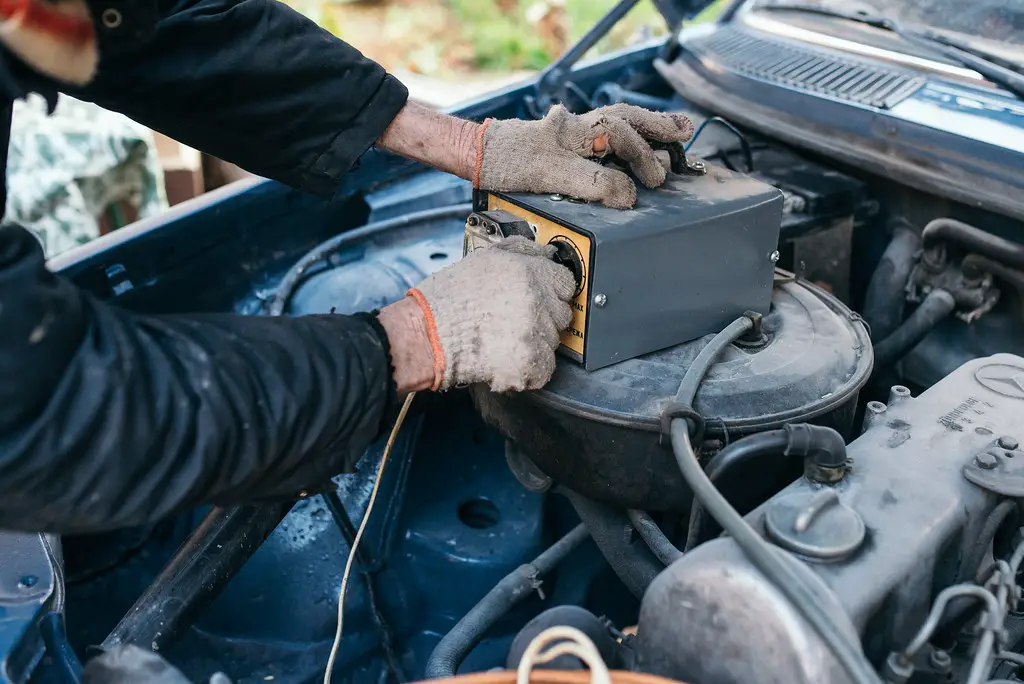Having a car that won’t start despite having a new battery can be frustrating. In this blog post, we will provide a comprehensive troubleshooting guide to help beginners and enthusiasts diagnose and fix the issue. We’ll cover various potential causes and solutions, ensuring you can get your car back on the road.
Reasons Why Your Car Won’t Start with a New Battery:
A car’s failure to start with a new battery can be attributed to several factors. Let’s explore some common causes of why your car won’t start with new battery:
Faulty Battery Connections:
Ensure that the battery cables are securely attached to their respective terminals, avoiding reverse polarity. Loose connections or reversed polarity can lead to electrical system damage.
Unnoticed Lights Draining the Battery:
Always double-check to ensure all lights are turned off when exiting the car. Accidentally leaving lights on can drain the battery over time. Vigilance and fully charging the battery can prevent this issue.
Evaluating the Starter Motor:
A faulty starter motor can mimic a dead battery. If you hear a single loud click when attempting to start the car, it indicates a potential problem with the starter motor.
Checking for Blown Fuses or Relays:
Blown fuses or relays can disrupt the car’s starting process. If a fuse or relay is blown, replacing it with the appropriate one can solve the issue.
Inspecting the Alternator:
A failing alternator can cause the new battery to lose charge while driving. Signs of a bad alternator include a shredded serpentine belt or a battery that has been jump-started with reversed polarity.
Considering Engine Problems:
In some cases, engine issues can prevent the car from starting. For example, a seized engine will not turn over and may resemble a dead battery or faulty starter. Diagnosing and repairing engine problems may require professional assistance.
Troubleshooting Steps:
To address the car’s non-starting issue, follow these steps:
Revisiting the Battery:
Ensure the battery connectors are corrosion-free and properly tightened. Use a battery cleaning solution or a mixture of baking soda and water to eliminate any corrosion. Test the battery’s charge with a voltmeter.
Inspecting the Alternator:
Measure the alternator’s output voltage with a voltmeter while the car is running. If the voltage is higher than when the car is off, the alternator is functioning correctly. Consider a free alternator test at a local auto parts store if the car still won’t start.
Investigating the Starter:
If lights and accessories work but the car won’t start, it may indicate a faulty starter. Auto parts stores often offer free testing services for starters.
Checking Fuel Lines and Injectors:
Inspect fuel lines for damage and replace if necessary. Perform a fuel injector cleaning service to address starting problems caused by clogged injectors.
Professional Assistance:
If none of the previous steps resolve the issue, consult a professional mechanic for proper diagnosis and repair. Complex issues like engine failure or faulty fuel pumps require expert attention.
Conclusion:
When faced with a car that won’t start despite having a new battery, it’s important to follow a systematic approach to troubleshoot and fix the problem. By checking battery connections, inspecting the alternator, evaluating the starter, and addressing other potential causes, you can increase the chances of successfully resolving the issue. Remember, if you’re unsure or unable to fix the problem, seek professional assistance to ensure your car gets back on the road safely.


